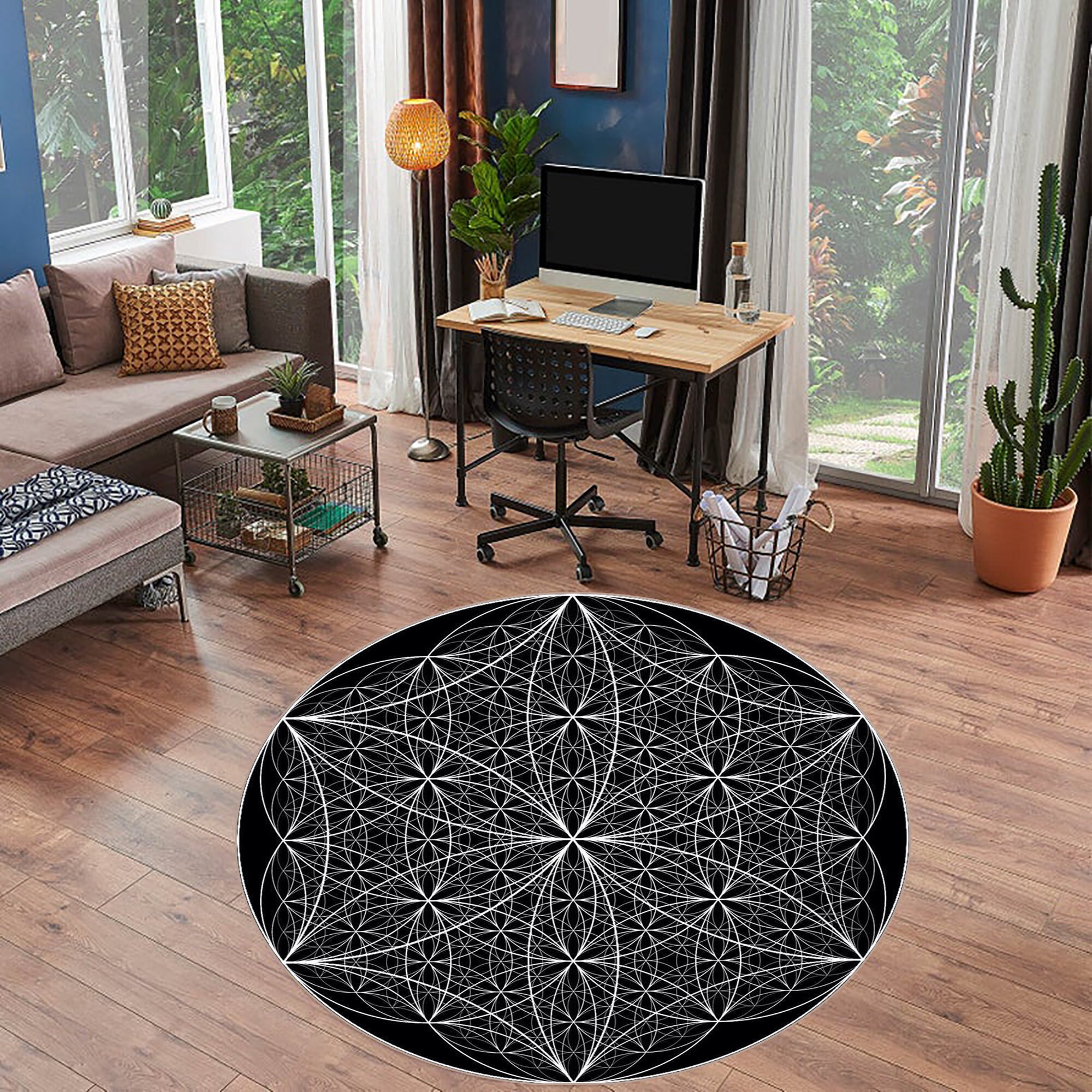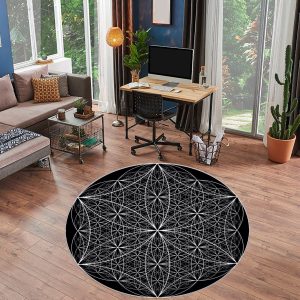
Sacred Geometry in Home Decor: Patterns with Purpose
Have you ever wondered why certain patterns and shapes seem to captivate and inspire us? Why do we find ourselves drawn to specific designs when it comes to decorating our homes? The answer lies in the concept of sacred geometry, an ancient knowledge that has been passed down through the ages. In this blog post, we will explore the fascinating world of sacred geometry in home decor and discuss how these patterns can add not only beauty but also purpose to our living spaces.

Sacred geometry is a belief system that dates back to ancient civilizations, such as the Egyptians, Greeks, and Mayans. It is the study of geometric forms and their relationship to the natural world, the universe, and the divine. These shapes, such as circles, triangles, squares, and spirals, hold symbolic meaning and are believed to possess inherent vibrational energy.
When we bring sacred geometry into our homes, we are not only adding aesthetically pleasing patterns but also infusing our spaces with positive energy and higher vibrations. One example of sacred geometry in home decor is the use of the Flower of Life pattern. This intricate interlocking circular design represents the interconnectedness of all living things and is thought to bring balance and harmony to a room.
Placing a piece of art or a wall decal featuring the Flower of Life in your living room or bedroom can create a sense of calm and unity. The repeated circles within this pattern emit a soothing energy that can promote relaxation and serenity. Additionally, the Flower of Life is said to be a symbol of creation and growth, making it a perfect choice for those looking to manifest abundance and new beginnings in their lives.
Another commonly used sacred geometry pattern is the Sri Yantra, a powerful symbol from ancient Hindu traditions. This nine-pointed geometric configuration is believed to represent the union of the divine masculine and feminine energies. By incorporating the Sri Yantra into your home decor, you can invite balance and harmony into your personal relationships and tap into the abundant energy of the universe.
One practical way to incorporate sacred geometry into your home decor is through the use of wallpaper or fabric with geometric patterns. By transforming your walls or furniture with these patterns, you are infusing your living spaces with their inherent positive energy. Additionally, you can choose decorative pillows, rugs, or curtains featuring sacred geometric designs to enhance the ambiance of any room.
Moreover, crystals are another fantastic way to bring sacred geometry into your home. Crystals are natural transmitters of energy, and many of them have distinct geometric shapes. For example, the quartz crystal often forms in hexagonal prisms, which represent balance and harmony. Placing crystals strategically around your home, or using crystal-based decor items, can create a healing and energetically balanced environment.
While incorporating sacred geometry into your home decor can be visually stunning, it’s important to remember that intention and mindfulness play a significant role in the energy you manifest. Take the time to connect with the patterns and shapes you choose. Meditate on their meaning and purpose in your life. By infusing your intention into your decor choices, you can amplify the transformative power of sacred geometry in your home.
In conclusion, sacred geometry offers a unique perspective on the beauty and purposeful design found in our living spaces. By incorporating patterns such as the Flower of Life and the Sri Yantra, we can create an environment that not only looks visually appealing but also promotes balance, harmony, and well-being. Whether you choose to decorate with wallpaper, fabrics, crystals, or art, the key is to infuse your decor choices with intention and mindfulness. By doing so, you can unlock the transformative power of sacred geometry and create a home that nourishes your mind, body, and soul.



